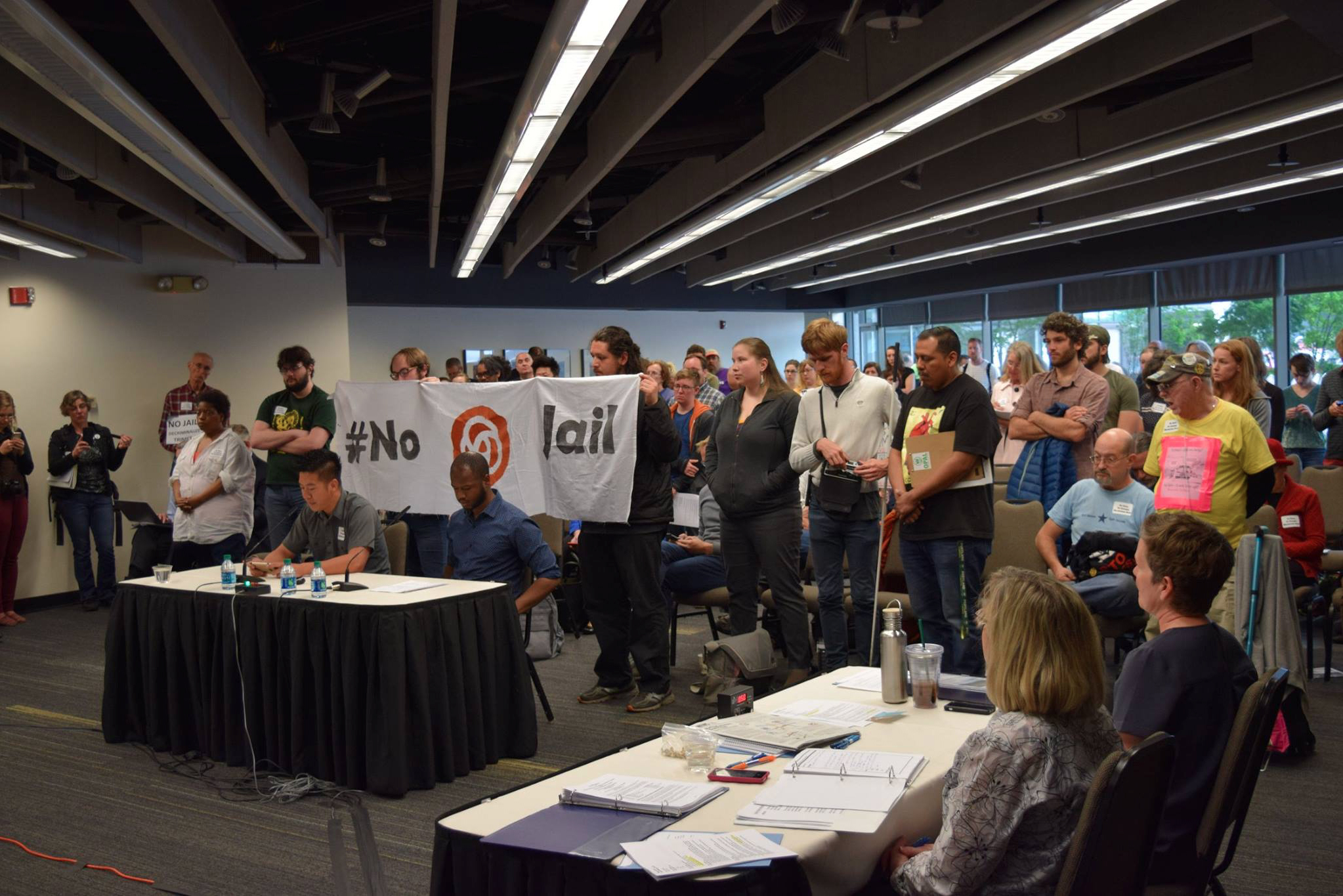On June 21, in a 7-0 vote, the State Board of Higher Education elected to arm the University of Oregon’s campus police officers. The University of Oregon Police Department’s 11 sworn police officers were able to carry firearms in the line of duty immediately following the ruling.
University of Oregon arms its campus police officers
[portfolio_slideshow id=54224]
On June 21, in a 7-0 vote, the State Board of Higher Education elected to arm the University of Oregon’s campus police officers. The University of Oregon Police Department’s 11 sworn police officers were able to carry firearms in the line of duty immediately following the ruling.
The issue of whether Portland State’s Campus Public Safety Office should arm its officers is still being hotly debated on campus, but CPSO Chief Phil Zerzan feels strongly that the university is past due for a fully sworn police force.
“We’re the last of the [three largest campuses in Oregon] without a [university-dedicated] armed police presence, and we have more compelling reasons than our partner institutions because of our urban environment,” Zerzan said.
In an interview with the Vanguard in January, PSU President Wim Wiewel said the conversation about the potential restructuring of CPSO into a university police department is an ongoing one.
“The door is still open and I’m very interested in the discussion of alternatives to enhance public safety alongside this proposal [of transition for CPSO],” he said. “There may be a way to reach an agreement or negotiation without going the full extent to sworn, armed officers. [This] discussion has not fully run its course yet and all arguments [need to] be heard, weighed and valued.”
The discussion began in earnest in late May, when a task force appointed by Wiewel to examine safety on campus held its first meeting for public comment. A second such meeting was held in early June.
“We’re currently in the process of reaching out to faculty, staff and students to get feedback from them about how we should manage campus public safety going forward,” said Scott Gallagher, PSU’s director of communications. “We’re constantly trying to review our campus public safety policies.
“The UO moved really fast [in pursuing] their goal of having a police department,” Gallagher added. “Whether or not [the officers should] be armed is an issue on top of that.”
It took U of O two years of public meetings and research to arrive at their position. Part of the university’s process of establishing a sworn law enforcement agency involved sending its officers to complete a 16-week training course at the police academy in Salem. The school then had to submit an additional request to the Board of Higher Education to authorize campus police officers to carry firearms while on duty.
An Oregon University System press release said that “98 percent of U.S. public universities with at least 15,000 students operate a police department with sworn officers who engage in a full range of campus law enforcement duties.”
Safety was a primary concern in the decision to pursue armed officers, according to Jamie Moffitt, U of O’s vice president for finance and administration.
“The bottom line is to ensure the safety of the entire campus community and the officers themselves,” she said in the press release.
Safety is of vital importance to the PSU community as well, Zerzan said.
“If you expect people to do police work you need to train and equip them as police officers,” he said. “Failure to do so is a disservice to the officers and to the community.”
Moffitt explained in the press release that arming U of O officers enables them to perform duties they wouldn’t be able to otherwise.
“Arming officers enables them to carry out other enforcement activities, such as transporting arrested individuals, responding to incidences such as domestic violence and being able to achieve much shorter response times for incidents.”
At PSU, there are incidents that CPSO is unable to respond to because they’re not a sworn and armed police force, Zerzan said.
“There are things we just can’t do, like responding to and handling an active-shooter incident,” he said. “In those situations, my officers need the ability to defend themselves, and they currently don’t have it.”
In a press release distributed by U of O’s Office of Strategic Communications, U of O President Michael Gottfredson acknowledged the many people were vital to the discussion surrounding this decision, including university and community members.
“Many people have been involved in conversations that will lead to a more meaningful relationship with our law enforcement professionals and improve the safety and security of our community,” Gottfredson said.
These included the Eugene and Springfield police departments, the Lane County Sheriff and district attorney’s offices, local transit and utilities services and various neighborhood and business associations, some of whom submitted letters supporting arming officers to the state board.
“Law enforcement partners are most effective when they are equally capable and equally dependent upon one another,” Lane County District Attorney Alex R. Gardner said in a letter to Gottfredson in early June.
Zerzan echoed this statement and said that changes to PSU’s current policies regarding CPSO are needed now.
“It’s inevitable [that PSU’s policies] are going to change—I would like it to be because of thoughtful planning, and not [as a reaction to] a tragedy,” he said.
More information about the University of Oregon Police Department is available on their website at police.uoregon.edu.







This is your best article on the subject yet Vanguard. Good work! Chief Zerzan is correct in that a change in the way that PSU is policed is inevitable. It would be in the best interest of the University Community to make this change a thoughtful and productive one rather than a quick reaction to a tragedy. If anyone does not believe that the current system on campus is inadequate, I suggest they ride with CPSO multiple times and see what it is like to attempt to police using the resources that are allowed statutorily under their current governance. After seeing that there really are only two options for the future: 1. Contract with an already established police department for dedicated officers assigned to the university(more than likely the Portland Police Bureau) or 2. Form a Campus Police Department that is responsive to the needs of the University Community. Given the choice I choose to have officers on campus that can police it in a manner that is effective and best suited for a University setting. This is an opportunity for the entire community to help decide what that department will be like. Hopefully the task force will come to the same conclusion when they release their report in the fall.